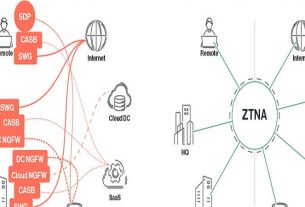Software developers have a wide variety of tools available to assist in their complex profession. From programming languages to the cloud, advancement in development tools allows programmers to collaborate and work faster and more efficiently. Applications are prone to bugs as they move through the development stage. These errors must be tracked and corrected. It can be a gargantuan task and at one time, meant going through hundreds of lines of code. Troubleshooting is now much more efficient thanks to processes such as distributed tracing.
Distributed Tracing Defined
The best place to start is to answer the question, what is distributed tracing? It is a process by which developers can track application requests as they move from frontend devices to backend databases and services. When an application shows errors or high latency, developers can use distributed tracing to track down the problem and troubleshoot it.
The Way Distributed Tracing Works
Applications can be monolithic or a group of microservices. A monolith application is one unit that handles every part of the process the application is designed for. Microservices are a series of parts that each handle a different core task of the overall application. They are usually managed by a team dedicated to the application purpose.
Monoliths are relatively easy to track but troubleshooting microservices is more complex as data moves through a number of separate modules linked in a complex manner. Applications may make a number of requests and calls to numerous modules.
A distributed tracing platform collects data from the first request made by an application. An example would be if a customer fills out a form on a website and submits it. The request is assigned a unique trace ID and a span in the platform. This first span is called the parent span and as requests are made in different services throughout the chain, a child span is added to the ID.
This enables the platform to track the ID through each and every request and makes finding errors and delays much easier. Troubleshooting becomes faster and more efficient which saves time and money.
Benefits of Distributed Tracing
There are two parts to distributed tracing and each works to a company’s benefit.
The metrics of distributed tracing provide a warning that there is a problem. The warning comes early in the development process and is easily read even by novices. This allows them to understand the problem without having to bring in a senior member of the team.
The other benefit is the insights that distributed tracing provides to the development team. Along with the early warning, team members accurately locate bottlenecks and find places where the system is not functioning correctly. This allows for rapid corrections and reduces the time a system is down.
This two-headed approach makes it a valuable tool throughout the entire development process from coding through testing and into troubleshooting.
What Distributed Tracing Does
Some of the specific tasks that distributed tracing does that help a company include:
- Finds irregular behavior caused by scaling automation
- Locates the causes of unexpected problems
- Gives the development team information on the status and health of microservices
- Checks on the end-users’ perspective of the frequency of errors, response times, and other metrics
- Records essential statistics and displays them on a dashboard for easy viewing
- Locates and debugs system bottlenecks and checks code for performance issues
Distributed tracing is a tool with a multitude of functions that provide assistance to developers. It can help teams create applications more quickly, with fewer errors, and help troubleshoot whatever problems do occur.
Application development is vital to businesses of every kind. It is also complex and there are many places where errors and bugs can cause problems running the app. The microservice approach breaks a program into modules for each task. This can make troubleshooting tricky and time-consuming. Thanks to distributed tracing, developers can create microservices and retain the ability to quickly track and repair problems.



